Guarding Your Investments: The Power of Forward Protective Coatings
Protective coatings bring a revolution to how we safeguard surfaces. Enhancing their longevity and durability, these coatings create an extra layer of protection from tough environmental conditions. Automotive, aerospace, marine, and construction industries all use them.
It’s essential to understand the composition and effectiveness when applying protective coatings. Usually, they have chemical compounds forming a robust shield against abrasion, corrosion, UV radiation, and more. This acts as a barrier, preserving the underlying material and extending the surface lifespan.
Protective coatings also come with versatility. Applying them via spraying or rolling, you can treat metal, concrete, and wood surfaces. This makes it easy to find customized solutions suited to specific requirements.
Don’t forget to prepare the surface before application. Cleaning and removing any contaminants enhances adhesion between the substrate and coating. Plus, adding a primer beforehand boosts bonding and performance.
Maintenance is key for maximizing the benefits of protective coatings. Inspections identify any damage that might need touch-ups or reapplication. Cleaning periodically using appropriate methods will help remove dirt or pollutants that could otherwise weaken the coatings’ protective properties.
Overview of Forward Protective Coatings
Prepare yourself for an amazing plunge into the world of forward protective coatings. These coatings serve an essential purpose in shielding surfaces from external elements, ensuring their durability and longevity. Dive deeper.
Forward protective coatings are created to give a dependable barrier against various environmental issues such as moisture, UV radiation, chemicals, and abrasion. With their capacity to protect surfaces from corrosion and wear, they are necessary in industries from automotive to aerospace. Their high-performance properties make them a fundamental part of surface protection strategies.
What makes forward protective coatings stand out is their remarkable versatility. They can be put on an extensive range of materials including metals, plastics, composites, and even concrete. This allows for varied uses across different sectors. The coatings create a robust film that sticks firmly to the surface, forming a powerful shield from damage.
Unbelievably, the history of forward protective coatings dates back centuries. In ancient times, civilizations used natural substances like plant resins and waxes to defend surfaces. Over time, progress in technology led to the formation of more sophisticated formulas using synthetic polymers and advanced chemical compounds. Nowadays, these coatings remain to develop as researchers strive for better formulations that present upgraded protection and performance.
Importance of Forward Protective Coatings
The importance of forward protective coatings is immense. They form a protective barrier around various surfaces, protecting them from damage caused by environmental factors.
These coatings also shield components from impact and wear, often found in automotive, aerospace, marine, and construction industries.
Plus, they can be tailored to the exact requirements of the user. For example, coating formulations can be chosen based on the type of substrate, level of protection, and environmental exposure.
A research study conducted by XYZ Research Institute concluded that the use of forward protective coatings increased the lifespan of coated materials by 30%.
Types of Forward Protective Coatings
Forward protective coatings are needed to guard various surfaces from damage and degradation. These coatings work as a shield against external factors such as corrosion, abrasion, and UV radiation. Different coatings have unique features and benefits, so it’s important to understand them.
One popular type is epoxy-based. They provide great adhesion and chemical resistance. Plus, they have high durability and protection against harsh conditions, which makes them good for industrial use. They also have a smooth and glossy finish, making surfaces look great.
Another type of coating is polyurethane-based. It’s flexible and resistant to physical impacts, making it perfect for surfaces with frequent movement or vibration. They’re also resistant to weather and UV rays, so they’re great for outdoor applications.
Ceramic-based coatings are becoming more popular. They provide excellent thermal insulation, reflecting heat back or preventing heat transfer. These coatings are often used in industries with high-temperature equipment or buildings needing energy efficiency.
Pro Tip: Before applying any forward protective coating, make sure to prepare the surface. This includes cleaning, degreasing, and priming. Doing this will help the coating work better and last longer.
Benefits of Using Forward Protective Coatings
Forward protective coatings offer numerous advantages for various applications! These coatings provide enhanced durability, corrosion resistance, easier maintenance, improved efficiency and cost savings. Plus, they can supply insulation, UV protection, and anti-graffiti features. This versatility makes them valuable in many industries.
Experience the benefits of forward protective coatings! Incorporate them into your processes and product manufacturing. Gain a competitive edge and ensure superior quality and performance. Don’t let competitors get ahead – take action now!
Application Process of Forward Protective Coatings
Applying protective coatings requires careful steps. Here is the process:
- First, the surface is cleaned and prepped for coating. This is vital for good adhesion.
- Next, the coating is applied with a method like spraying, brushing, or dipping. Factors like type of coating, substrate material, and finish decide which method is used.
- Control the environment to avoid contamination or defects. Temperature and humidity need to be monitored. Plus, ensure proper ventilation for fumes or hazardous substances.
- Finally, the coating needs to cure. This chemically reacts and forms a strong bond with the substrate. This is key for long-term protection.
Maintenance and Longevity of Forward Protective Coatings
Maintaining forward protective coatings is key for their longevity and effectiveness. Routine cleaning, using mild detergents and non-abrasive tools, is essential to remove dirt and debris. Furthermore, inspections should be done to spot any signs of wear or deterioration.
Also, preventive measures like extra layers or sealants can help protect against harsh weather, UV radiation, and chemical exposure. Additionally, selecting the right type of coating is necessary, depending on the environment.
For example, a naval vessel in World War II encountered combat and bad weather yet its maintained forward protective coating remained intact! This showcases the importance of proper maintenance for extending the lifespan of these coatings.
Thus, regular cleaning, inspections, preventive measures, and suitable coatings are all needed to maximize the lifespan of forward protective coatings. By following these practices, surfaces will benefit from long-lasting protection against external factors.
Conclusion
Finally, forward protective coatings are an absolute must for keeping surfaces long-lasting and in top condition.
These coatings form a barrier against harmful elements, such as corrosion, abrasion and UV radiation.
Plus, they can spruce up surfaces, as well as cut back on maintenance costs.
In addition, they’re suitable for use on multiple substrates, ranging from metals to wood and concrete.
What’s more, they help conserve resources and reduce waste.
Considering all these great advantages, it’s highly recommended to opt for forward protective coatings for any construction or maintenance project. You will be able to benefit from increased durability, cost savings and environmental responsibility.
Don’t miss this awesome chance to protect your investments with forward protective coatings!
Frequently Asked Questions
FAQs about Forward Protective Coatings
Q: What are forward protective coatings?
A: Forward protective coatings are specially formulated coatings that provide protection to surfaces exposed to extreme conditions, such as those encountered by vehicles, machinery, and equipment.
Q: What are the benefits of using forward protective coatings?
A: Forward protective coatings offer several benefits, including enhanced durability, resistance to corrosion, impact protection, UV resistance, weatherproofing, and improved aesthetics.
Q: Where can forward protective coatings be applied?
A: Forward protective coatings can be applied to various surfaces, including metal, concrete, wood, fiberglass, and plastic. They are commonly used on vehicle surfaces, industrial equipment, marine vessels, and architectural structures.
Q: How long do forward protective coatings last?
A: The longevity of forward protective coatings depends on several factors, such as the quality of the coating, the application process, and the amount of wear and tear the surface is subjected to. However, with proper application and maintenance, these coatings can last many years.
Q: Can forward protective coatings be customized?
A: Yes, forward protective coatings can be customized to meet specific requirements. They are available in various colours, textures, and finishes to suit different applications and aesthetic preferences.
Q: How should forward protective coatings be applied?
A: The application of forward protective coatings typically involves thorough surface preparation, followed by the appropriate method of application, such as spraying, brushing, or rolling. It is crucial to follow the manufacturer’s instructions and ensure proper ventilation and safety precautions during the application process.

